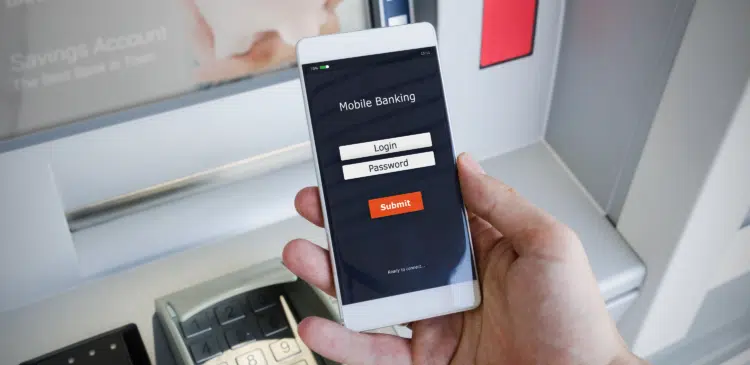How to Add a Payment Gateway to a Banking App

In the current financial world, payment gateways and banking applications are inseparable. A payment gateway is software that enables two parties, a merchant and a client, to exchange money safely. Mediation between the buyer, seller, and bank ensures safe and efficient transaction processing.
Nevertheless, the banking apps are made for mobile devices only and created by the banks to provide clients access to their accounts and various banking services. The convenience of their smartphones allows the users to access multiple banking apps, which enable them to check account balances, make transfers, and pay bills.
Suppose banking apps want to provide users with a secure and simple payment method. In that case, they must include payment gateways. Banks can facilitate their customers by letting them buy goods in-app using their existing bank accounts and payment gateways; hence, they don’t need additional third-party software or services. Besides enhancing the user experience, this connection generally makes financial transactions secure.
Choosing the Right Gateway for Your Banking App’s Transactions
There are several factors to consider when selecting a payment gateway for your banking app. First of all, make sure that it works with the technological stack your project uses. Before picking a payment gateway, ensure it works with your project’s framework, language, and infrastructure.
Please prioritize security to safeguard your customers’ personal information. At the same time they purchase, they should use a payment gateway that conforms to industry standards like PCI DSS.

Consider the payment gateway cost. The setup, monthly, and transaction fees charged by different gateways may differ enormously. Compare these expenses with the number of transactions expected for your app to select the best option for your business.
Stripe, PayPal, Braintree, and Authorize.Net are a few of the most popular payment gateway solutions for banking apps. You should independently research and compare these gateways since they have various features and benefits.
The Payment Gateway Integration with Your Mobile Banking App
Integrating a payment gateway to a banking app is time and effort-consuming. Acquiring the necessary credentials from the payment gateway provider is the first thing you should do. These credentials mostly contain an API key or token to ensure safe communication between your app and the gateway servers.
You have to introduce the SDK of the payment gateway into your app’s code. Using the tools and libraries provided by the SDK, you can handle payments and communicate with the payment gateway’s API.
Ensure that your app’s UI is built to smoothly integrate with the payment gateway’s capabilities with no apparent interruptions during the integration. These responsibilities include dealing with mistakes and exceptions and providing user-friendly instructions and feedback during payment.
Security and adherence to industry standards are the two widespread concerns; the other is whether your app’s technology stack is compatible with the payment gateway. The best way to pass these hurdles is to work closely with the development team and the support team of the payment gateway provider.
Producing a Secure Gateway and Its Passwords
Securing the credentials to the payment gateway to prevent the client’s critical information from being stolen and to stop unauthorized people from using your app’s payment features is necessary. Proper credential management procedures should always be followed, including using encryption and limiting access to authorized individuals.
Another method to guarantee your payment gateway integration is secure is to utilize two-factor authentication (2FA). In two-factor authentication (2FA), customers must provide additional information, for instance, a one-time password sent to their mobile device, to complete a purchase.
Another vital step in detecting and correcting security lapses is continuously monitoring and auditing your app interactions with payment gateways. Suppose your app’s payment infrastructure has any flaws. You will discover and fix them in that case by doing regular security reviews and pen tests.
Validation and Correction of the Integration with the Payment Gateway
The integration with the payment gateway must be tested extensively to work as expected and offer a seamless user experience. Various outcomes should be tested, including successful and failed transactions and edge cases like server problems or network disruptions.
Verify that your app and the payment gateway safely transmit any payment-related data during testing. Among the measures taken to safeguard sensitive information are encryption before transmission and prohibition of its storage or transmission in plain text on the device.
Problems like network connectivity issues, incorrect configuration of payment gateway settings, and incompatibility with various devices or operating systems are among the problems that arise during the integration of payment gateways. If you need help with a payment gateway, look at their documentation and support resources or ask your development team for assistance.
Improving the Whole Payment Gateway Experience to Enhance Conversions
Eliminating friction throughout the payment process and increasing conversion rates needs an optimized payment gateway for user experience. A simple payment process can significantly improve customer happiness and conversion rates.
Automatic data filling saved payment methods, and one-click payments are some of the features that could enhance the user experience of the payment gateway. With these features, the amount of data consumers need to enter is minimized, making the checkout process more efficient.

Users are more likely to understand and finish every step of the payment process when instructions are clear and straightforward. Users feel more engaged and confident during the transaction if they see progress indications or other visual clues.
Looking at user behavior and transaction data can help determine what needs optimizing. Identify the checkout process bottlenecks and implement data-driven fixes by monitoring the KPIs such as cart abandonment rates, average transaction time, and conversion rates.
Updating the Payment Gateway Integration is a Must for Success in the Long Run
The payment gateway integration’s long-term reliability and success depend on its periodic maintenance. The integration should be monitored regularly for any problems to prevent payment processing interruptions.
Compatibility with the latest versions of the payment gateway software is a must. You can secure your app and its users from possible risks by installing these updates, which usually fix bugs, improve performance, and add security features.
Systematically reviewing the app’s error reports and transaction logs will help you spot problematic patterns you must fix. These problems must be solved immediately to attain high service quality and maintain the customer experience.
Before deploying the new payment gateway integration to production, ensure it has been tested meticulously. In this scenario, you must check the application responsible for payments and verify that it works with any changes to its backend.

 Bill Yeager, Co-Owner of High Point SEO & Marketing in CT
Bill Yeager, Co-Owner of High Point SEO & Marketing in CT